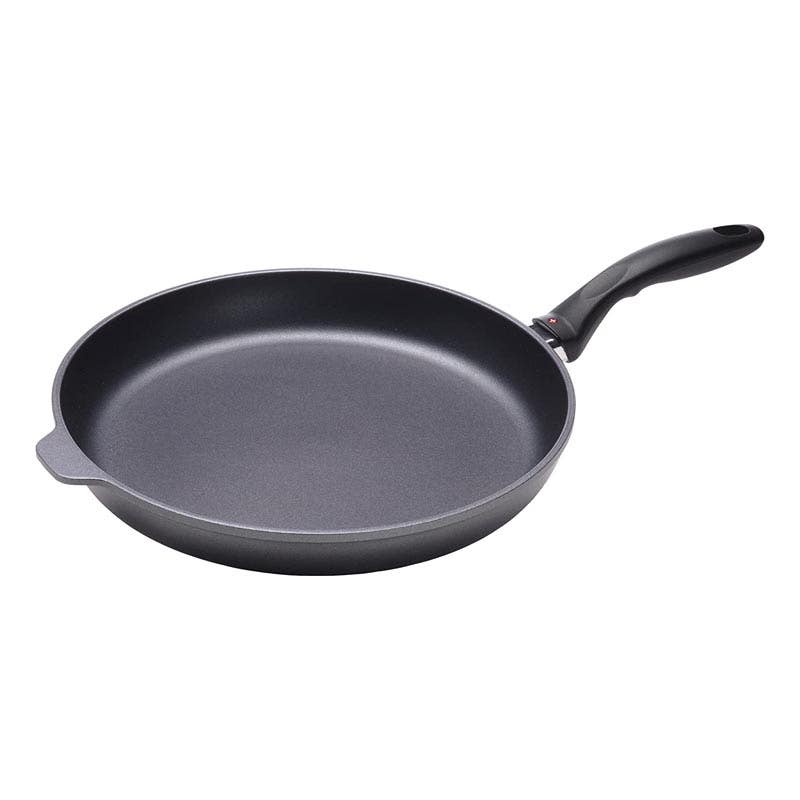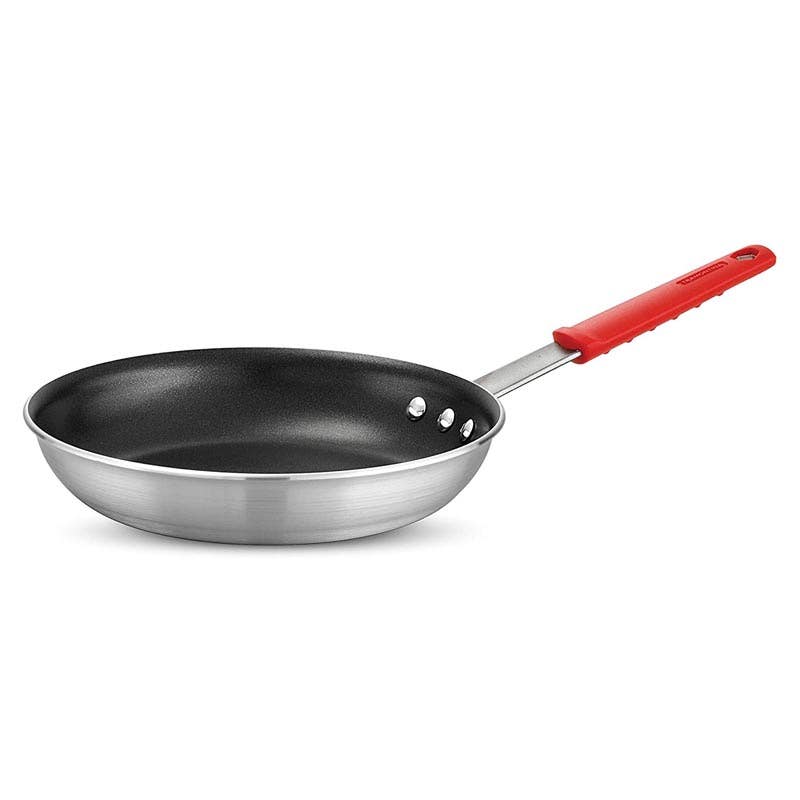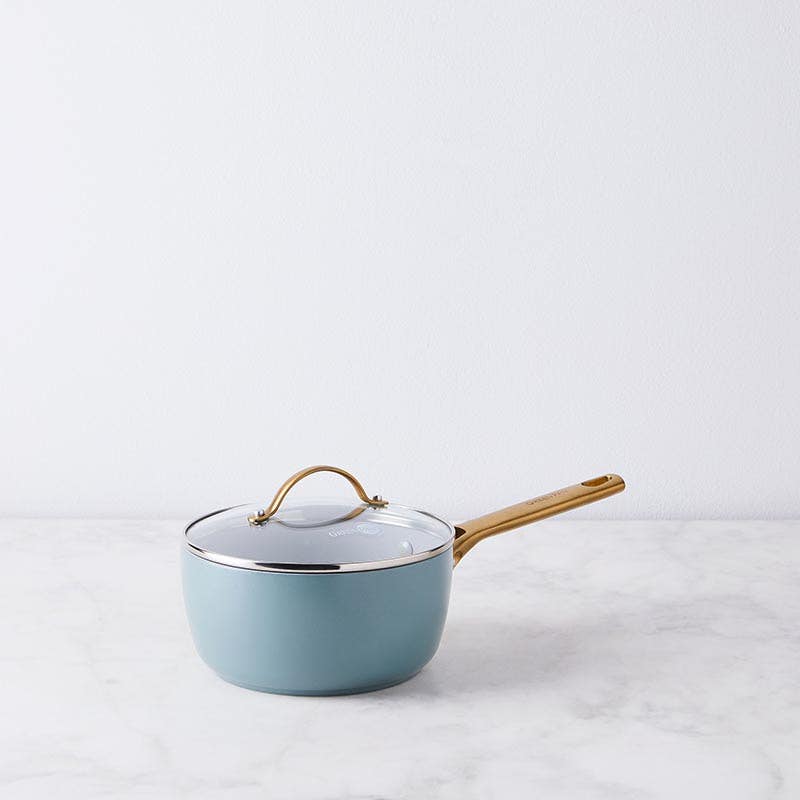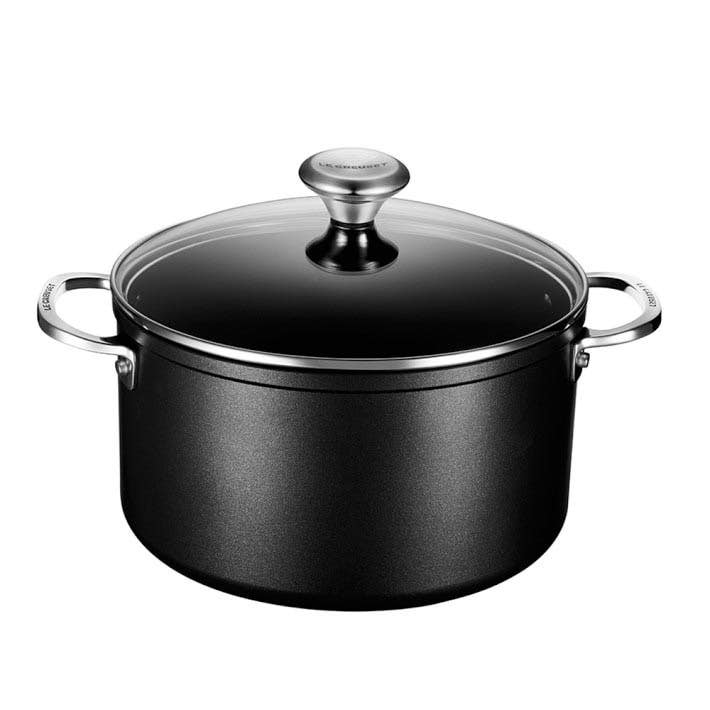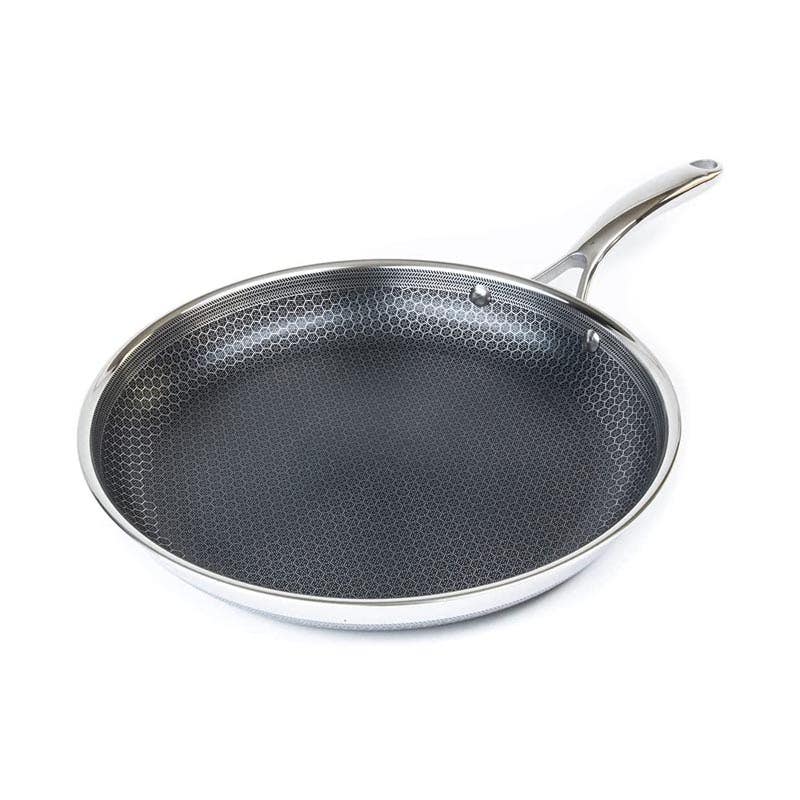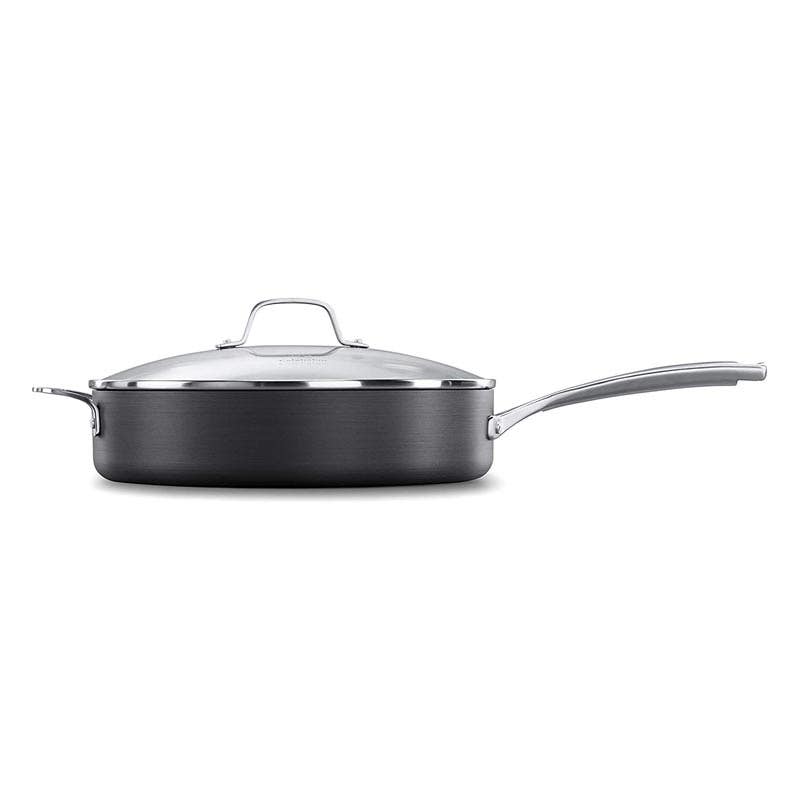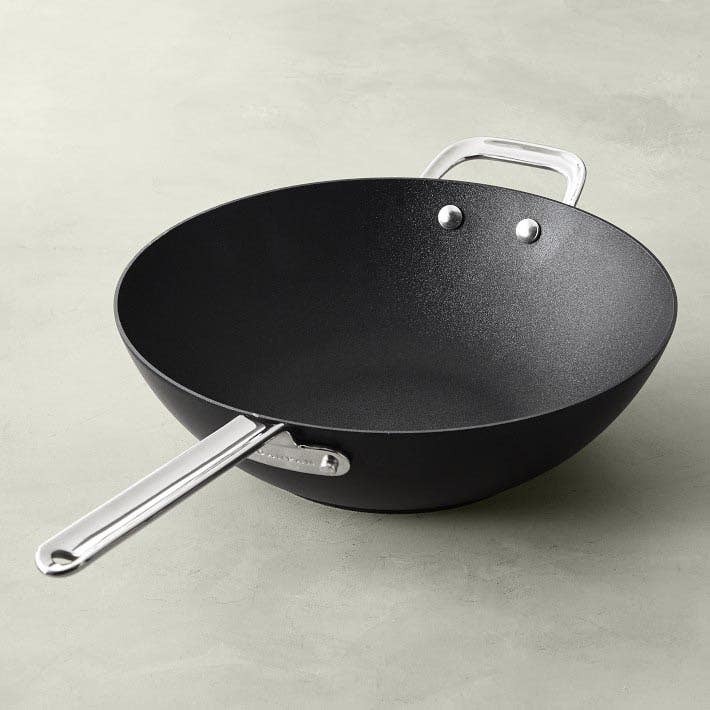Scrambled Eggs and Risotto Are No Match for the Best Nonstick Cookware
Making cooking and cleanup a breeze.
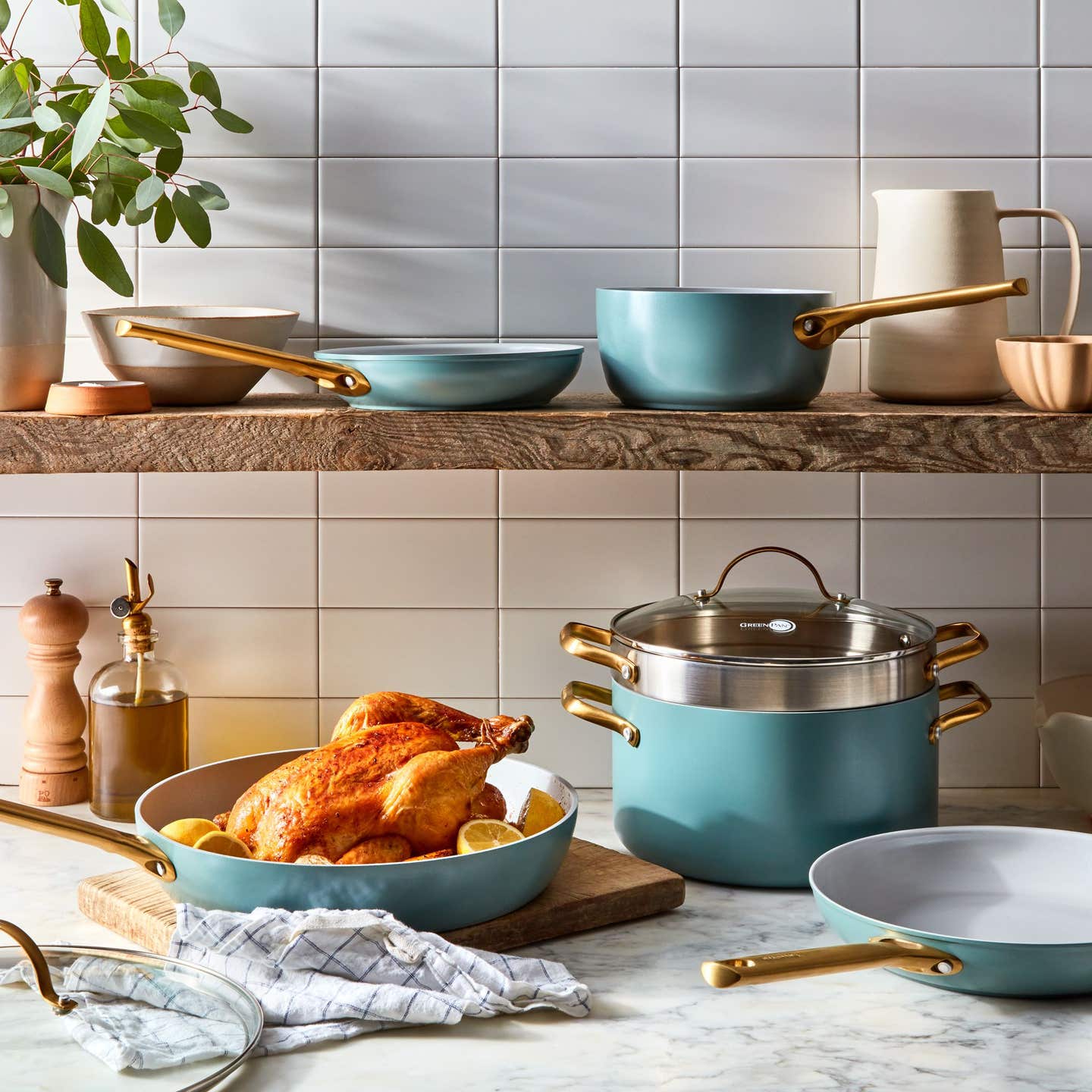
Anyone who’s tried to prepare a meal without the right materials can attest that having quality, reliable cookware—from hardy griddles to an arsenal of great pots and pans—makes cooking (and cleanup) much smoother and happier. Nonstick cookware in particular is ideal for turning out fluffy omelets, delicate fish, and light-as-air pancakes; it’s also a big help for simmering sauces or steaming rice, as you don’t have to worry about pesky little pieces sticking to the pan and creating a mess. Nonstick pieces are easy to clean, less likely to get discolored than their stainless steel counterparts, and will quickly become a go-to you’ll use meal after meal (after meal!).
Subpar nonstick cookware starts to lose its slickness after just a handful of uses, so it’s important to do your research before investing in a set. “Nonstick tends to be beaten on,” says David Barrette, the owner of Main Street Kitchens in Hanover, New Hampshire, and executive sous chef at the Hanover Inn. “It’s worth the investment in a pan that will deliver for years.” Here are our top picks.
- Best Set: Swiss Diamond 10-Piece Set
- Best Value: Tramontina 10-Inch Professional Restaurant Fry Pan
- Best Saucepan: Food52 x GreenPan Nonstick Sauce Pan
- Best Stockpot: Le Creuset Toughened Nonstick Pro Stock Pot
- Best Skillet: Hexclad Stainless Steel Frying Pan
- Best Sauté Pan: Calphalon Sauté Pan
- Best Wok: Scanpan TechnIQ Nonstick Wok
Features to Keep in Mind
Types of Nonstick Cookware
The main component in most nonstick cookware is polytetrafluoroethylene (PTFE)—also called Teflon—which is a tough, flexible compound first discovered by scientists at American industrial company DuPont in the 1930s. If you’ve heard about the potential dangers of nonstick material, it is probably related to perfluorooctanoic acid (PFOA), which used to be part of the manufacturing process. The runoff from this chemical was linked with health problems; since 2015, PFOA has been completely phased out and is no longer used, so you can breathe easy that it won’t be found in newly made nonstick pieces.
PTFE is generally considered a safe and stable compound. However, at temperatures above 570 degrees Fahrenheit, Teflon coatings on nonstick cookware start to break down. Instead of PTFE, ceramic skillets get their nonstick properties from a material derived from beach sand. This coating can be brittle and more prone to tiny scratches, but it can withstand higher heat.
Carbon steel skillets aren’t layered with a nonstick coating and must be seasoned to retain their slickness. Acidic foods and scrubbing can strip off the surface, but it can be completely restored if damaged. The upside is that these pans can last a lifetime; the downside is that they require time and attention to maintain.
Cooktop Compatibility
Since nonstick pans are usually made with a non-magnetic aluminum base, most are not compatible with induction cooktops. Cast iron, enameled cast iron, and most stainless steel cookware is induction compatible, but always double-check to make sure a specific product will work before taking it home.
Heating Capacity
“Never use super high heat with a nonstick pan,” Barrette advises, as temperatures above 500 degrees Fahrenheit can damage nonstick surfaces. “Sticking to medium-high heat will give your pan a much longer life.”
Another way to protect the coating: Eschew metal utensils, which might scratch your pot. Instead, use spoons and spatulas made from plastic, wood, or heat-resistant silicone.
Maintenance
Hand-wash your nonstick pan with hot, soapy water. Every few weeks, “give it a complete wash, dry, and a wipe with canola oil. Food-grade mineral oil is fine, but you don’t need to go out and buy it,” says Barrette. “It’s a sort of conditioning treatment that will help keep the coating fresh and new.”
Our Top Picks
Best Set: Swiss Diamond 10-Piece Set
Best Set
Barrette swears by Swiss Diamond for its super durable diamond-reinforced coating, which is “not heavy but has some heft and will last for many, many years.” He’s made French toast hundreds of times, he says, “but the first time I made it in my Swiss Diamond, I’ve never had it turn out better.”
Made in Sierre, Switzerland, Swiss Diamond’s nonstick coating is made with tiny diamond crystals for great heat conduction and an exceptionally long-lasting nonstick surface. The factory is powered by 100 percent hydroelectric power from the Swiss Alps.
Best Value
Tramontina's Pro Series Restaurant Fry Pans are designed to withstand the rigors of a professional kitchen, but they’re hardy and reliable at home, too—all for a reasonable price. Ideal for frying, scrambling, and sautéing, the pans' heavy-gauge aluminum core distributes heat quickly and evenly while the reinforced nonstick interior means you don’t need much (or any) oil or butter. The cast stainless steel handle is riveted for added support and comes with a soft, removable silicone grip.
Best Saucepan: Food52 x GreenPan Nonstick Sauce Pan
Best Saucepan
It’s not just the pretty sage-blue hue that makes this design stellar. The pan is compatible on any stovetop (even induction), sports a Thermolon ceramic surface that’s safe for metal utensils, and has a heavy construction that ensures even cooking. It’s strong enough to stand up to the oven without blistering or peeling, and—bonus—it can whiz right through the dishwasher, too.
Best Stockpot: Le Creuset Toughened Nonstick Pro Stock Pot
Best Stockpot
Crafted by the cookware experts at Le Creuset, this stockpot browns and sears like a dream, then wipes clean beautifully. And this pot is not messing around: Its textured nonstick coating is four times stronger than other Le Creuset nonstick surfaces. Its hard-anodized, forged-aluminum core conducts heat quickly and evenly; plus, it's compatible with all types of cooktops and built to resist scratches, even from metal utensils.
Best Skillet: Hexclad Stainless Steel Frying Pan
Best Skillet
Hexclad’s hexagon design is made with a laser etching process, which creates a unique surface that is both stainless steel and nonstick. This means the pan can withstand high heat for a proper sear with less oil or butter and is safe in the oven (up to 500 degrees Fahrenheit). The first and third layers of the cookware are stainless steel for sturdy nonstick properties, while an aluminum core in between ensures consistent, even heat distribution. At the same time, the handles stay cool for easy maneuvering.
Best Sauté Pan: Calphalon Sauté Pan
Best Sauté Pan
This is a great all-around sauté pan, with a few thoughtful bells and whistles like measuring marks, straining covers, and pour spouts. Long stainless steel handles provide heat resistance when cooking on the stovetop (it’s safe in the oven up to 450 degrees Fahrenheit), and the dual-layer nonstick interior makes for easy cleanup. Durable hard-anodized aluminum means the pan gets hot fast and evenly—and stays that way.
Best Wok: Scanpan TechnIQ Nonstick Wok
Best Wok
Eco-friendly Danish cookware company Scanpan is behind the TechnIQ line of commercial-grade nonstick cookware, including this wok. Pressure-cast of 100 percent recycled aluminum in Ryomgård, Denmark, it’s perfect for making stir-fries, tossing vegetables, and searing meat with even heat distribution and no pesky hot spots. Every nonstick pan made by Scanpan passes through the hands of artisans at least eight times before it leaves the factory.
Ask the Experts
Do nonstick coatings wear off easily?
The best nonstick finishes rarely peel or flake off. (If you do see flakes, it’s time to retire your pan.) Still, over time, the stick-resistant properties slowly but surely diminish. If you notice your nonstick is becoming a sort-of-stick, it may be time to invest in a new pan.
Can I put nonstick cookware in the dishwasher?
Barrette says to avoid the dishwasher at all costs. “If you love it, don’t put it in the dishwasher,” he says. “The harsh environment takes away a little bit of its life. I always recommend handwashing.”
Do scratches impact the performance of nonstick cookware?
There’s no inherent health danger in a scratched-up nonstick pan, but you will likely find that the nonstick factor isn't quite as robust as it was when it was fully intact.
Keep Reading
Continue to Next Story
